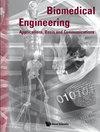DETECTION OF AUTISM SPECTRUM DISORDER BY FEATURE EXTRACTION OF EEG SIGNALS AND MACHINE LEARNING CLASSIFIERS
IF 0.6
Q4 ENGINEERING, BIOMEDICAL
Biomedical Engineering: Applications, Basis and Communications
Pub Date : 2022-12-10
DOI:10.4015/s1016237222500466
引用次数: 0
Abstract
Autism Spectrum Disorder (ASD), a neurodevelopmental disorder, impacts the subject’s social communication and interaction and the subjects exhibit restricted and repetitive behaviors. Subjects with ASD may need assistance throughout their life, depending on the severity. Early diagnosis of ASD is therefore critical for early intervention. ASD is diagnosed clinically based on behavioral assessments of the subjects, which results in delayed diagnosis, since the typical ASD traits due to aberrant brain development take time to develop. Neurological disorders associated with aberrant brain electrical activity have been detected by analyzing Electroencephalogram (EEG) signal patterns. In this study, we used features extracted from EEG brain waves to categorize ASD and normal subjects using Machine Learning (ML) classifiers. Autoregressive (AR) coefficients, Shannon entropy, Multifractal wavelet leader estimates, Multiscale wavelet variance and Discrete Fourier Transform (DFT) coefficients were extracted from EEG brain waves of ASD and normal subjects. Support Vector Machine (SVM), Decision Tree (DT), Logistic Regression (LR), k-Nearest Neighbor (k-NN) and Feed-forward Neural Network (FNN) were utilized as classification algorithms to categorize the ASD subjects and the control subjects. An accuracy of 90% was achieved by k-NN algorithm using AR features, Shannon entropy, Multifractal wavelet leader estimates and Multiscale wavelet variance estimates in ASD categorization. An accuracy of 93% was achieved by k-NN using the DFT features. The findings of this study indicate that features extracted from EEG are sufficient enough for categorization of ASD subjects and the control subjects.基于脑电信号特征提取和机器学习分类器的自闭症谱系障碍检测
自闭症谱系障碍(Autism Spectrum Disorder, ASD)是一种神经发育障碍,影响受试者的社会沟通和互动,表现出限制性和重复性行为。ASD患者可能一生都需要帮助,这取决于病情的严重程度。因此,ASD的早期诊断对于早期干预至关重要。ASD的临床诊断是基于对被试的行为评估,这导致了诊断的延迟,因为由于大脑发育异常导致的典型ASD特征需要时间来发展。通过分析脑电图(EEG)信号模式,可以发现与异常脑电活动相关的神经系统疾病。在这项研究中,我们使用机器学习(ML)分类器从脑电波中提取特征来对ASD和正常受试者进行分类。从ASD和正常人的脑电波中提取自回归(AR)系数、Shannon熵、多重分形小波前导估计、多尺度小波方差和离散傅立叶变换(DFT)系数。采用支持向量机(SVM)、决策树(DT)、Logistic回归(LR)、k-近邻(k-NN)和前馈神经网络(FNN)作为分类算法对ASD受试者和对照组进行分类。基于AR特征、Shannon熵、多重分形小波前导估计和多尺度小波方差估计的k-NN算法在ASD分类中准确率达到90%。利用DFT特征,k-NN的准确率达到93%。本研究结果表明,从脑电图中提取的特征足以用于ASD受试者和对照组的分类。
本文章由计算机程序翻译,如有差异,请以英文原文为准。
求助全文
约1分钟内获得全文
求助全文
来源期刊

Biomedical Engineering: Applications, Basis and Communications
Biochemistry, Genetics and Molecular Biology-Biophysics
CiteScore
1.50
自引率
11.10%
发文量
36
审稿时长
4 months
期刊介绍:
Biomedical Engineering: Applications, Basis and Communications is an international, interdisciplinary journal aiming at publishing up-to-date contributions on original clinical and basic research in the biomedical engineering. Research of biomedical engineering has grown tremendously in the past few decades. Meanwhile, several outstanding journals in the field have emerged, with different emphases and objectives. We hope this journal will serve as a new forum for both scientists and clinicians to share their ideas and the results of their studies.
Biomedical Engineering: Applications, Basis and Communications explores all facets of biomedical engineering, with emphasis on both the clinical and scientific aspects of the study. It covers the fields of bioelectronics, biomaterials, biomechanics, bioinformatics, nano-biological sciences and clinical engineering. The journal fulfils this aim by publishing regular research / clinical articles, short communications, technical notes and review papers. Papers from both basic research and clinical investigations will be considered.
 求助内容:
求助内容: 应助结果提醒方式:
应助结果提醒方式:


